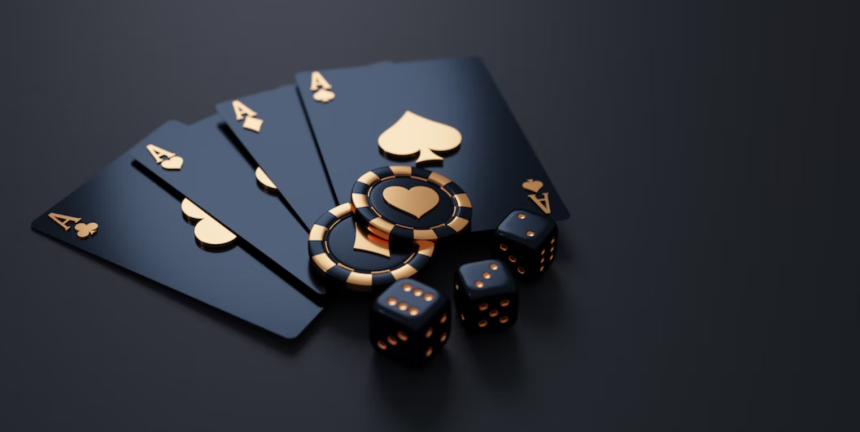When you think of poker, what comes to mind? For many, it’s images of smoky rooms, high-stakes gambles, and lady luck smiling upon the fortunate few. However, this perception only scratches the surface of what poker truly entails. Poker isn’t just a simple game of chance; it’s a clever mix of strategy, psychology, and math skills. In this piece, we’re going to debunk the myth that poker is all about luck and reveal the skills that set the pros apart from the novices. We’ll explore the art of bluffing, decoding poker odds, and reading tells like a seasoned player. Buckle up as we dive into the world of poker as a game of finesse and expertise.
The Art of Bluffing
Bluffing is undoubtedly the most iconic element of poker, immortalized in countless movies and TV shows. But there’s a lot more to successful bluffing than just keeping a straight face and going all in. To illustrate the nuances of bluffing at the highest level, let’s look at a recent high-stakes poker game that made headlines. On PokerGO’s “High Stakes Poker,” pro player Alan Keating pulled off a record-breaking bluff, winning a massive $1,412,500 pot. According to Gambling Industry News, Keating was dealt a relatively weak starting hand, yet through a series of bold bets and raises, he convinced his opponent that he held a much stronger hand.
The Psychology Behind a Successful Bluff
This monumental hand showcases several key aspects of successful bluffing:
- Timing: Keating chose the perfect moment when the board presented possibilities for strong hands.
- Reading opponents: He accurately assessed his opponent’s likely hand range and exploited their tendencies.
- Confidence: Keating’s unwavering aggression sold the story of a strong hand.
- Risk management: While a massive amount, the bluff was calculated based on pot size and Keating’s read.
Consider the story of Chris Moneymaker. In the 2003 World Series of Poker, Moneymaker turned a $40 online poker satellite entry into a $2.5 million first prize. How? He mastered the art of bluffing, a key strategy we’ll explore in this section.
Decoding the Odds in Poker
While bluffing adds drama and psychology, understanding odds forms the mathematical backbone of poker. Poker odds are the probabilities of specific outcomes, like the chances of improving your hand or having the best hand at the table. As per a detailed guide on PokerNews, mastering odds is crucial for informed decisions.
Breaking Down the Math of Poker Odds
Let’s look at a common scenario: In Texas Hold’em, you have two hearts in your hand and two more on the flop. You now have four cards to a flush, with one card to come. What are your odds of hitting that flush?
There are 13 hearts in a deck, and you’ve seen 4, leaving 9 unseen hearts out of 47 remaining cards. Your odds are around 19.1% (9/47). Understanding these odds helps you decide whether calling a bet is worthwhile. If the pot odds are better than 19.1%, it would be mathematically correct to call if you hit your flush.
This example only scratches the surface. Advanced players consider combinations of outs, implied odds, and even integrate opponents’ potential hands into calculations. Familiarizing yourself with the odds of different poker hands is crucial for developing your poker prowess.
Reading Poker Tells Like a Pro
While odds provide a mathematical edge, reading tells adds psychological insight. Poker tells are subtle cues that can reveal information about a player’s hand or intentions. Getting good at reading tells means you’ve got to be observant, spot patterns, and get a feel for how people think.
Here are some common tells to watch out for:
- Physical tells:
- Visible pulse or changes in breathing
- Involuntary hand movements or tremors
- Posture shifts
- Behavioral tells:
- Sudden changes in talking or betting patterns
- Handling chips/cards differently
- Delayed reactions when making decisions
- Betting patterns:
- Inconsistent bet sizing
- Timing tells
- Deviations from their usual style
Keep in mind, tells aren’t foolproof. Skilled players are aware of their own tells and may use false ones to mislead. Additionally, online poker requires different observational skills for timing and betting patterns.
A famous example occurred in the 2003 World Series of Poker Main Event. Chris Moneymaker noticed Sammy Farha touching his chip stack in a particular way that Moneymaker had seen when Farha had a strong hand previously. This tell gave Moneymaker the confidence for a massive bluff that led to his victory.
To improve your tell-reading abilities, practice observing opponents even when not in a hand. Look for patterns connecting their actions to hand strengths. But always consider tells alongside other factors like betting patterns. For a comprehensive guide on advanced poker strategies, including tell-reading, check out GGPoker’s resources.
Wrapping Up the Poker Journey
As we’ve explored, poker combines strategy, psychology, and math into a game that rewards skill over pure chance. From bluffing techniques that require deep opponent reading to calculating odds for optimal decisions, to deciphering subtle tells, success demands a diverse skillset. All these elements come together to make poker a game that’s always interesting and challenging, with endless chances to get better and master the game.
Now that you have a deeper understanding of the skills involved, think about how you can apply them in your next poker session. Have you pulled off an impressive bluff or made a pivotal decision based on odds? Maybe you spotted a telling behavioral cue from an opponent. Share your experiences and insights in the comments below. Let’s keep the conversation going and learn from each other on this fascinating poker journey.















